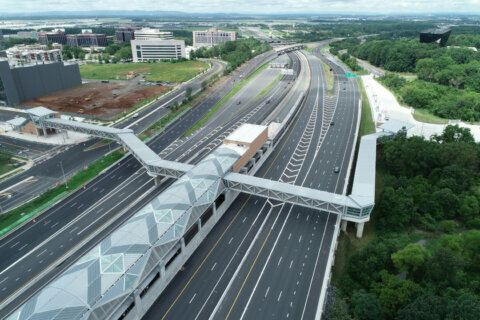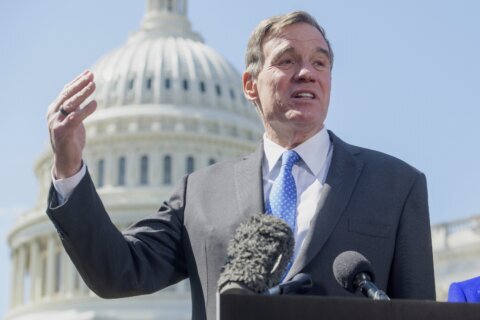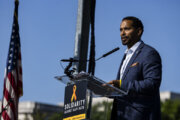This article was republished with permission from WTOP’s news partner InsideNoVa.com. Sign up for InsideNoVa.com’s free email subscription today.
This article was written by WTOP’s news partner InsideNoVa.com and republished with permission. Sign up for InsideNoVa.com’s free email subscription today.
With gas prices high and office work returning for many, riders are returning to the area’s buses and trains.
The coming 2023 fiscal year, which begins July 1, will be crucial for every transit agency in the region as federal pandemic relief money that has been used to backfill losses in fare revenue begins to run out. If bus and rail operators can’t meet budget ridership goals, they could have to cut service, which in itself can turn away riders by making the service less useful.
But right now, the area’s transit agencies have some reason for optimism. For both VRE and OmniRide, the first quarter of 2022 brought the highest ridership since the COVID-19 pandemic began.
Over the first four months of 2022, average daily ridership on local and commuter OmniRide routes has grown by over 45%. Over the same period, VRE has seen its average daily ridership more than double, from 2,083 in January to 4,366 in April. Ridership had been back on the decline in January with the rapid spread of the omicron COVID variant, but April’s numbers for both operators were still well above the monthly highs for 2021.
Still, bus and rail ridership is far below pre-pandemic highs. But OmniRide said that May numbers – which haven’t been fully reported – hit 50% of pre-COVID levels, a high-water market for the pandemic era.
VRE CEO Rich Dalton said that May numbers were going to reach 30% of pre-pandemic levels. The trends are similar to those seen by other transit providers. Despite a railcar problem that has drastically reduced service, Metro’s ridership has begun to outpace its previous budget projections for the first time since the pandemic began.
“Our ridership trends are following many of the same patterns noted by other transit agencies in the region,” said Perrin Palistrant, OmniRide’s director of operations and operations planning. “A combination of more people returning to their offices in person, more people commuting in general locally or into the D.C. employment core and more traffic on the roadways has led to the consistent monthly increases we are having.”
Bob Schneider, executive director of OmniRide, said a number of factors have come into play for transit so far this year. Gas prices are hitting record highs, making flat transit fares more attractive. And at the same time, traffic volumes in the region have been as heavy as – and at times exceeded – pre-pandemic levels, making train service or buses using toll lanes on Interstates 66, 95 and 395 more attractive.
Finally, a growing number of federal workers are returning to the office a few days per week, and for some of those workers, parking that had been easy during the height of the pandemic is becoming harder to find.
“We’re starting to get those things to come back into play and it’s going to pay the dividends in the future. And we already have a culture of transit, so we don’t have to create something we didn’t have before,” Schneider told InsideNoVa.
If current ridership trends continue, OmniRide would find itself beating budget goals for the coming fiscal year for fare revenue, meaning it would need to use less of its federal relief money to fill the gap. So far, neither OmniRide nor VRE has had to make any major cuts to service or payroll during the pandemic because of the relief money, but the pot is starting to shrink.
In its budget for the coming fiscal year, VRE has a goal of 8,000 average daily riders for its 32 trains, which would generate $25.3 million in fare revenue. But to pay for all its operating expenses, the agency is still budgeting over $28 million in federal relief money, a little more than half of what it needed for fiscal 2022 from last July to now.
OmniRide, meanwhile, is hoping to need no more than $18.1 million of its federal relief money in the coming year, but that would leave just $8.1 million left.







